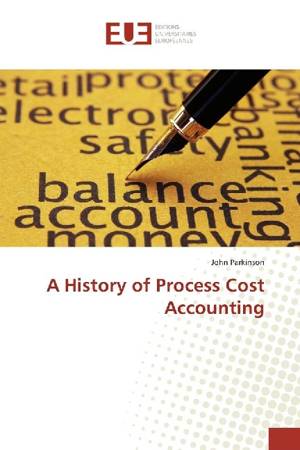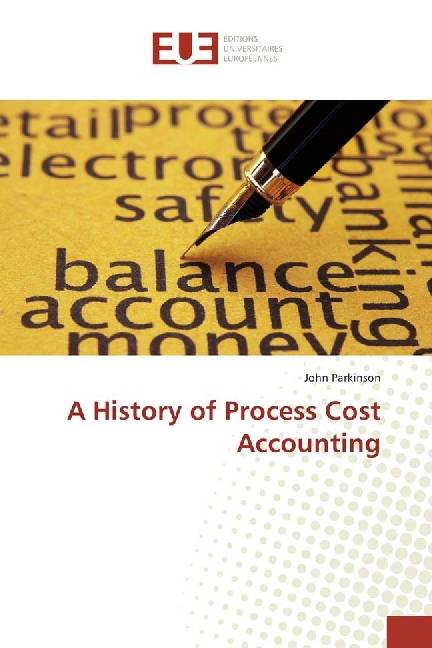
- Afhalen na 1 uur in een winkel met voorraad
- Gratis thuislevering in België vanaf € 30
- Ruim aanbod met 7 miljoen producten
- Afhalen na 1 uur in een winkel met voorraad
- Gratis thuislevering in België vanaf € 30
- Ruim aanbod met 7 miljoen producten
Zoeken
Omschrijving
Process costing is alive and well and is in use in industries where homogenous products are manufactured, or where a common process is applied, either in continuous or in batch operations. From an examination of the somewhat limited literature on process costing it is clear that by the beginning of the 20th century general practice had evolved to include the cascading of actual costs from one process to the next in sequence, and the inclusion of the equivalent units of partly completed work within process inventory. That approach became enshrined in textbook treatment of the topic. Research carried out towards the end of the 20th century shows that actual costs had been supplanted by standard costs; that the cascading was no longer done; and that the equivalent units calculation had been discontinued. Tragically, the textbook content has failed to keep pace with these developments, and textbooks now teach a version of process costing that has no relation to current practice. Because the textbooks are all out of date, the teaching that they support is also out of date.
Specificaties
Betrokkenen
- Auteur(s):
- Uitgeverij:
Inhoud
- Aantal bladzijden:
- 52
- Taal:
- Engels
Eigenschappen
- Productcode (EAN):
- 9783639607604
- Verschijningsdatum:
- 8/02/2017
- Uitvoering:
- Paperback
- Formaat:
- Trade paperback (VS)
- Afmetingen:
- 152 mm x 229 mm
- Gewicht:
- 90 g

Alleen bij Standaard Boekhandel
+ 47 punten op je klantenkaart van Standaard Boekhandel
Beoordelingen
We publiceren alleen reviews die voldoen aan de voorwaarden voor reviews. Bekijk onze voorwaarden voor reviews.











